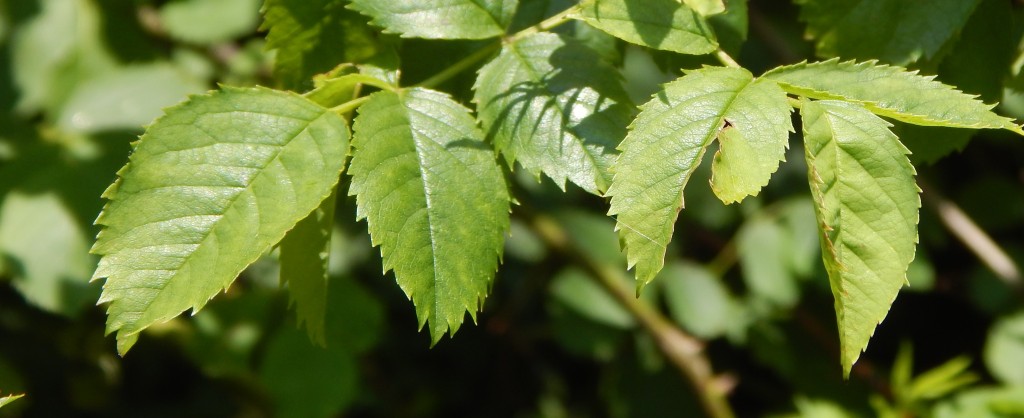
[304] Rosa canina, Wild Rose
Rosa rugosa, Japanese Rose
Introduction
Rosa canina, the Wild Rose, is a bushy deciduous shrub with open pink flowers, a widespread wildflower in Britain.
Rosa rugosa, the Japanese Rose, is a more compact bush with somewhat larger, redder flowers, widely cultivated in Britain in gardens and parks.
Both species have stems covered in thorns. (Botanists call them prickles, but to most people they are thorns.)
There are many other species of Rosa, called Roses, that we will meet tomorrow.
Rosa canina is also known as the Dog Rose. As a garden plant, Rosa rugosa is more usually called by its scientific name.
[Rugosa is also an order of horn corals, all now extinct.]
Many other unrelated plants are called roses, usually from the similarity of their flowers. We have already met [181] Rose of Sharon and [277] Primrose.
Taxonomy
Kingdom – Plants
Division – Vascular Plants
Class – Angiosperms (Flowering Plants)
Order – Rosales
Family – Rosaceae
Genus – Rosa
Scientific Name – Rosa canina, Rosa rugosa
See the next post for Rosa species, hybrids, varieties and cultivars.
Name
Rose comes via the Latin rosa from Greek rhodon, perhaps from Old Persian roots. It has become a word associated with a light pink colour.
The English dog rose comes from the Classical Latin rosa canina, coming from Ancient Greek. In ancient times it was used to treat the bite of mad dogs, perhaps because the hooked prickles resembled the dog’s canine teeth.
The Latin rugosus means wrinkled, from the leaf shape.
Wild Rose
Rosa canina is a deciduous bushy shrub. It is not really a climbing species but can scramble upwards with the help of thorns along its stems. Leaves, strictly speaking leaflets of a pinnate leaf, are usually serrated.
Flowers are open, almost flat, with five petals, usually light pink but can be from white to a deeper pink. Fruits, initially green, mature to a familiar bright orange or red rose hip (or rosehip.)
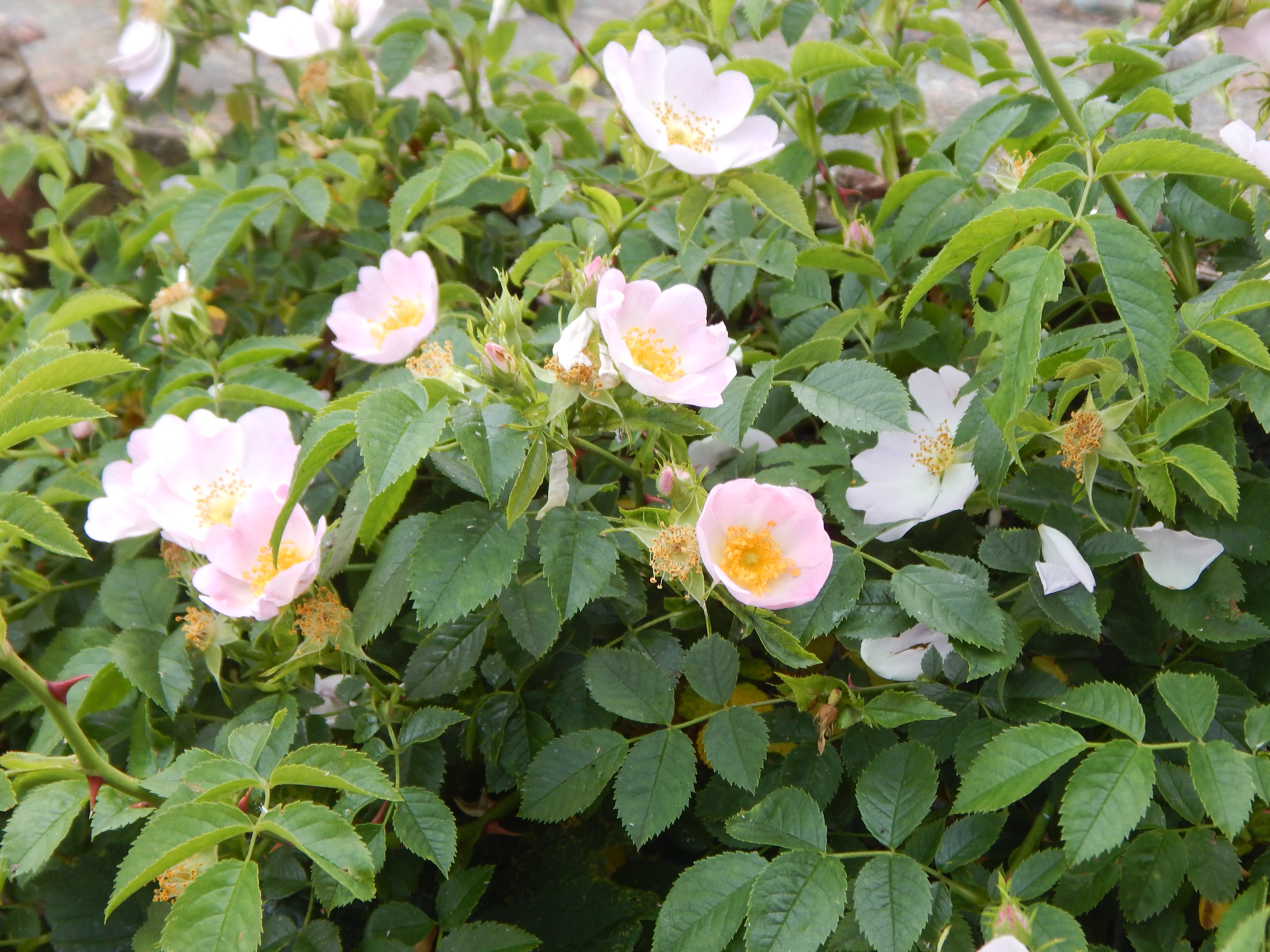
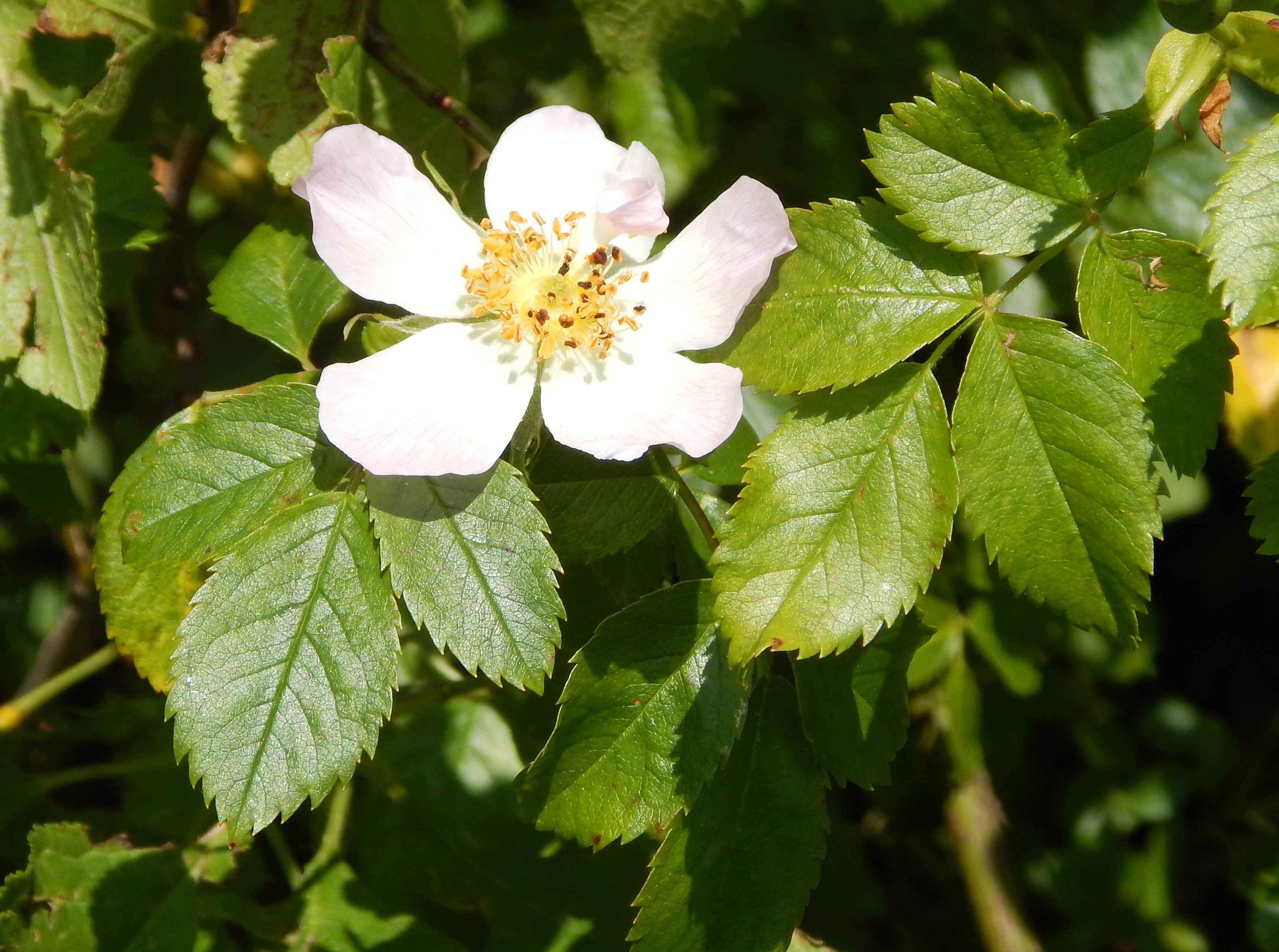
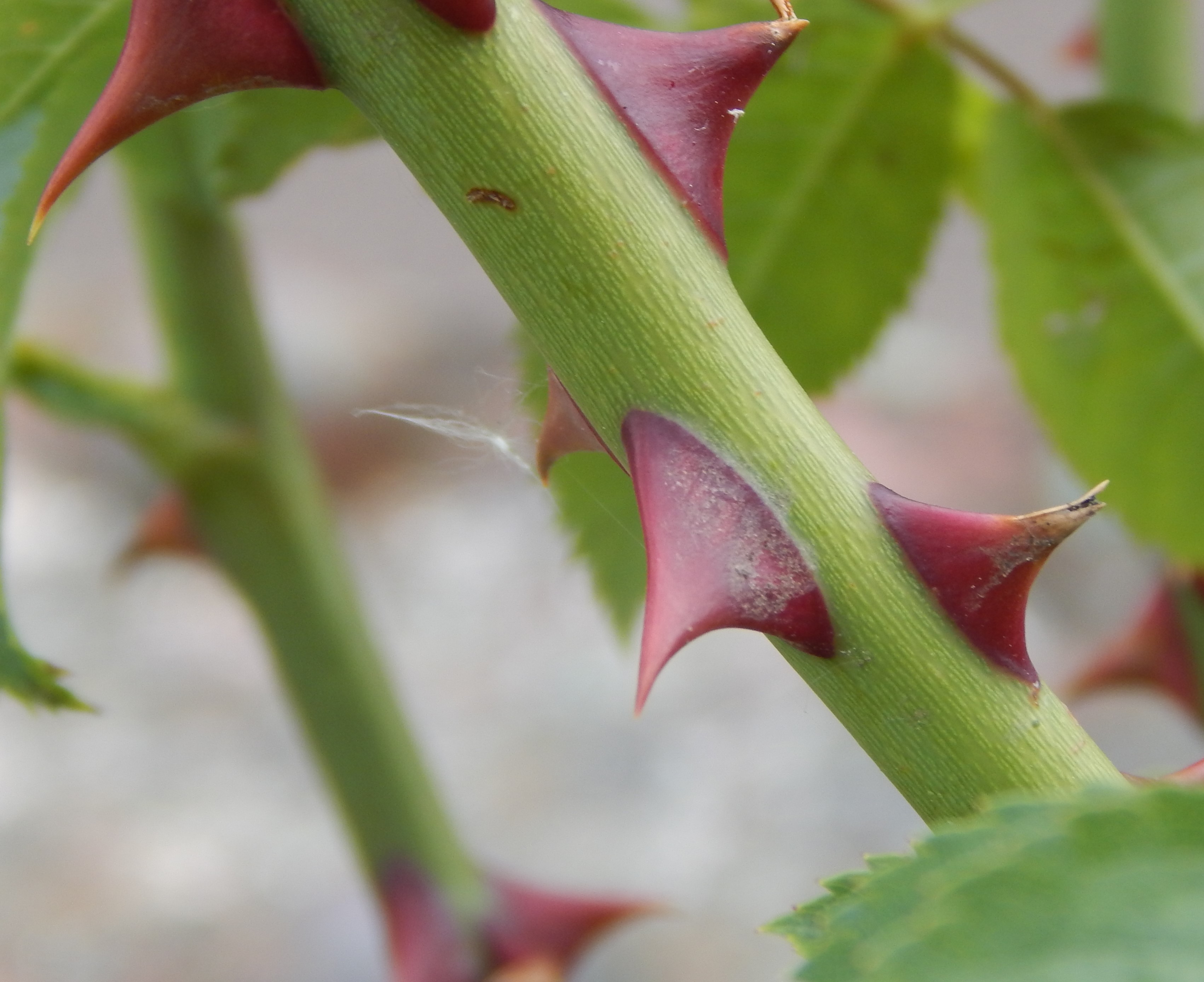
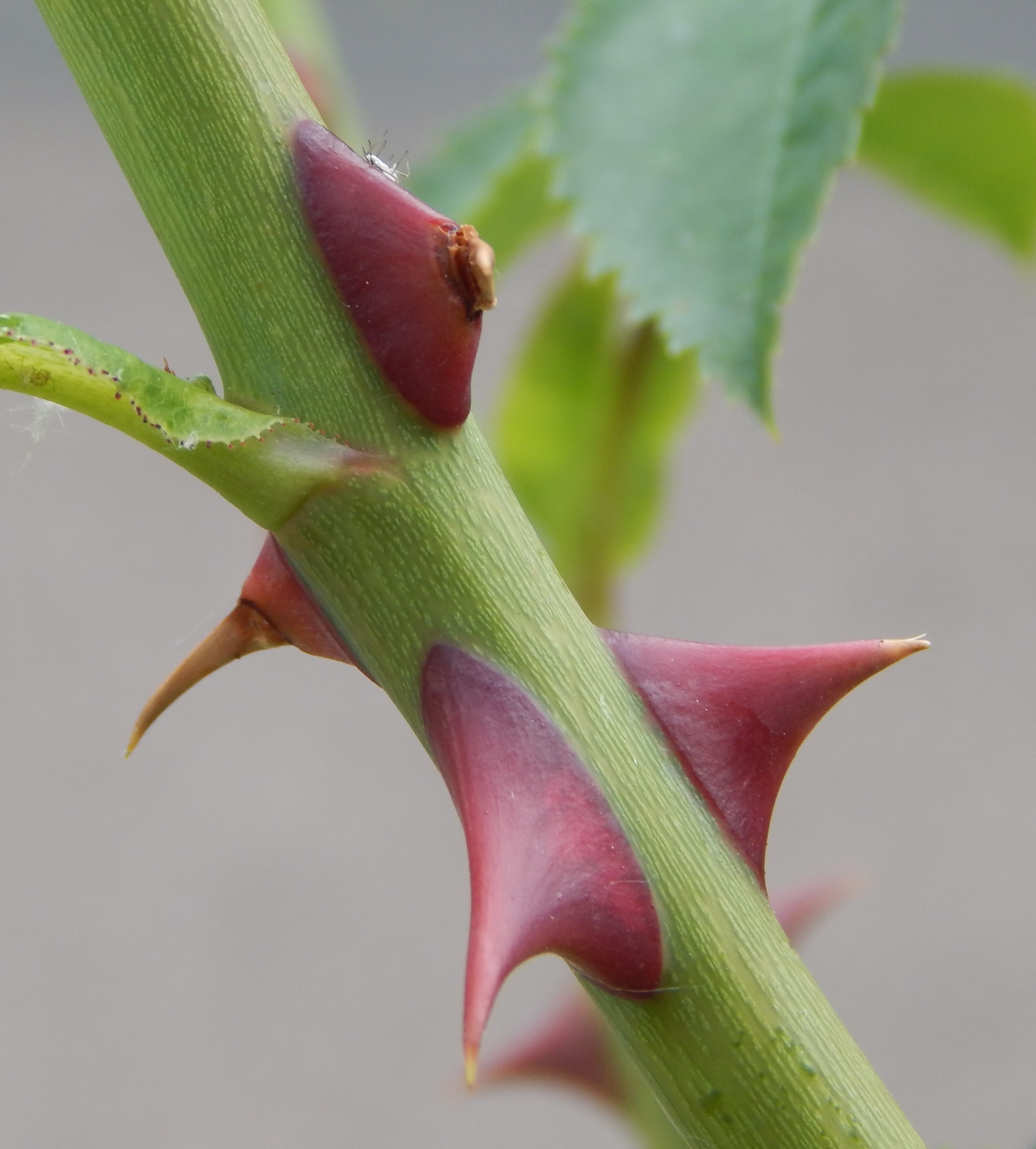


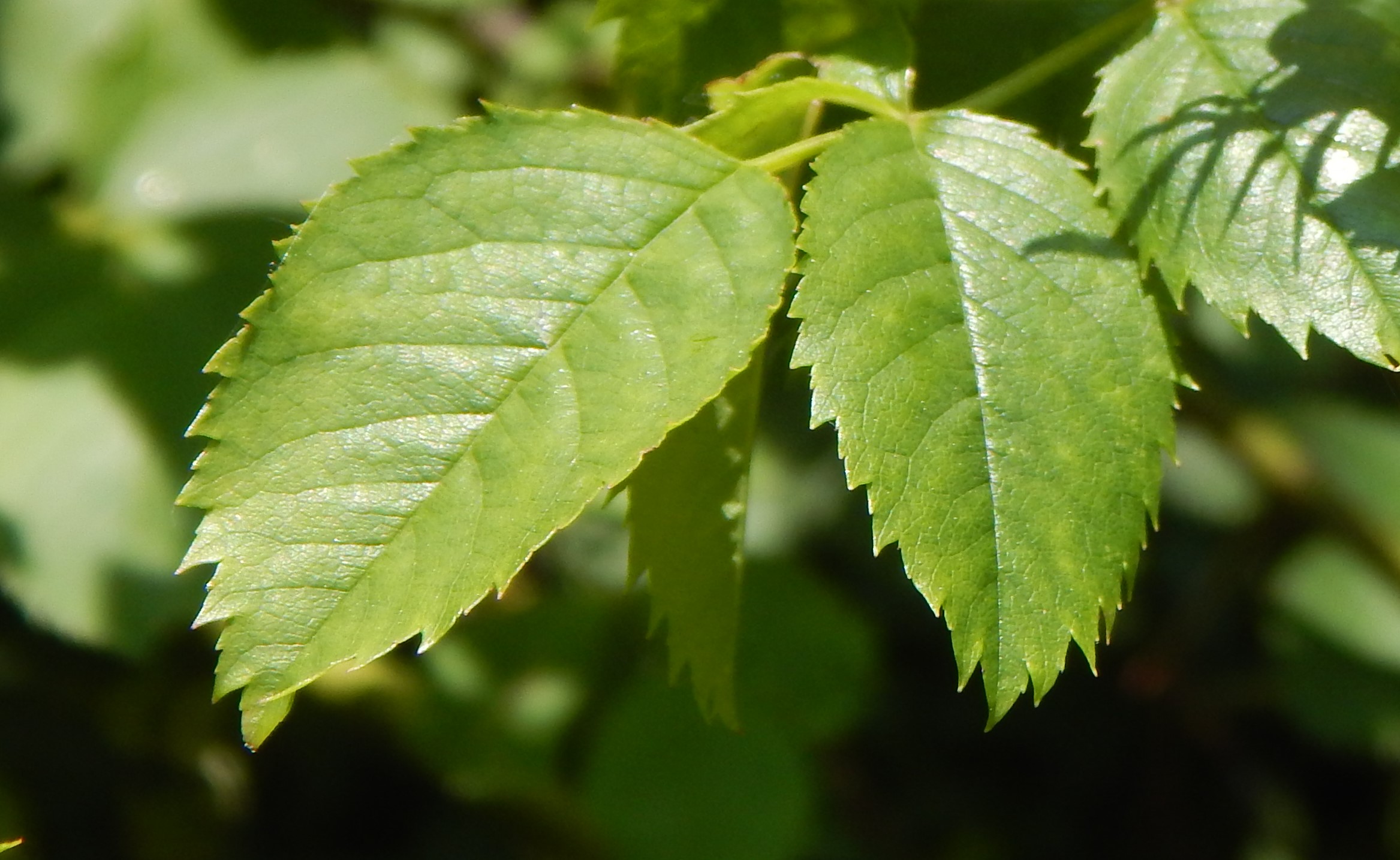

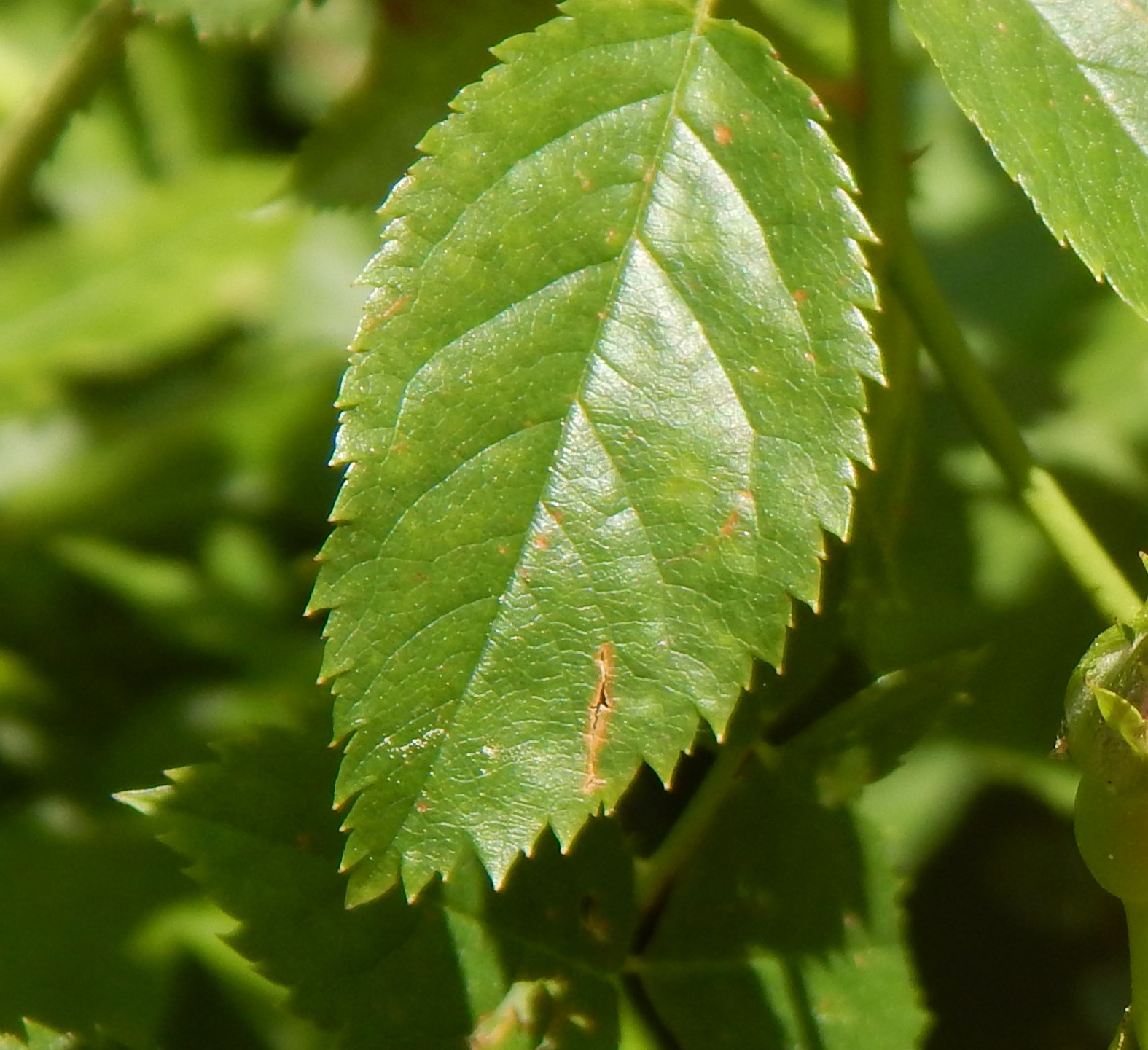

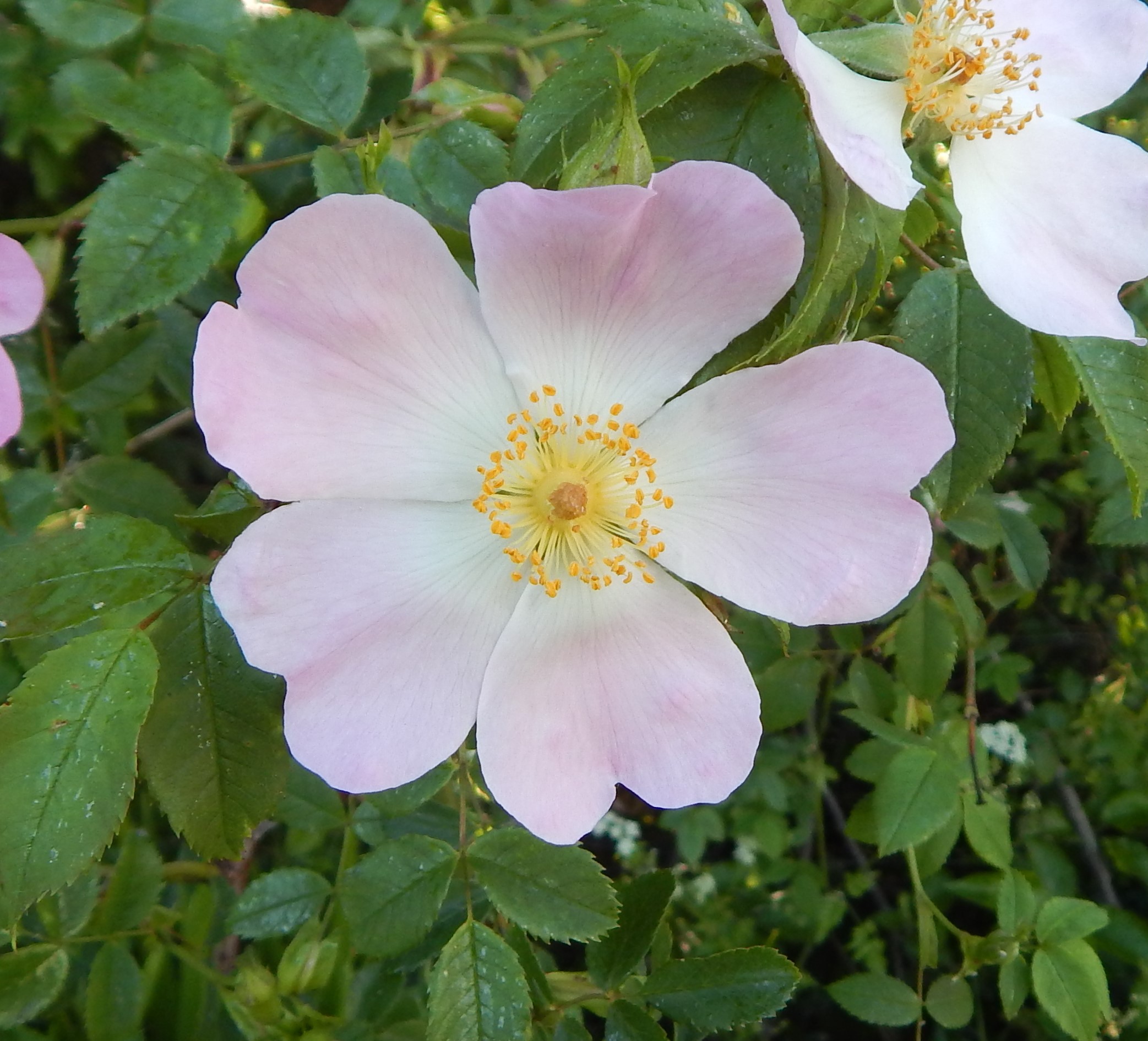
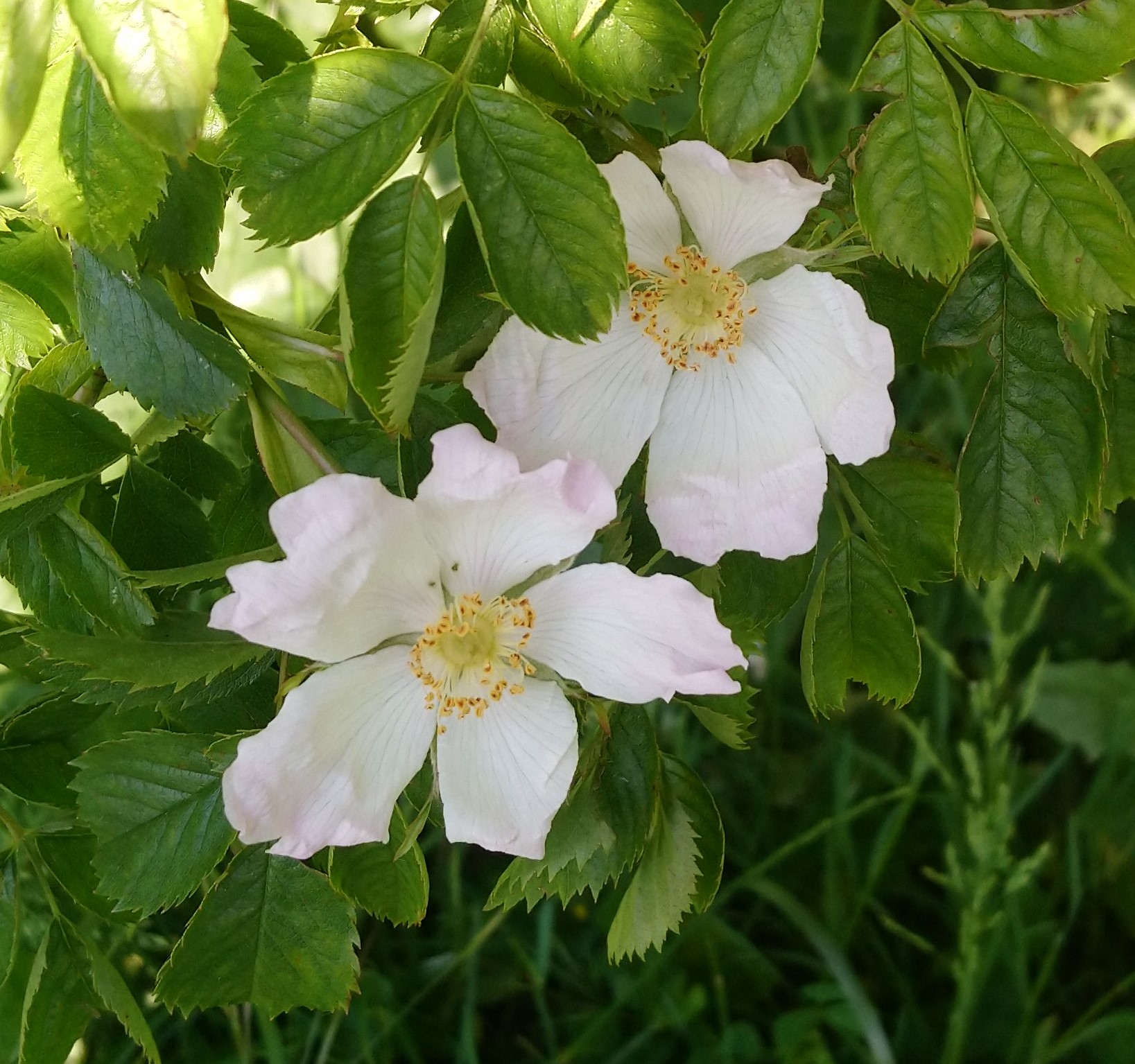
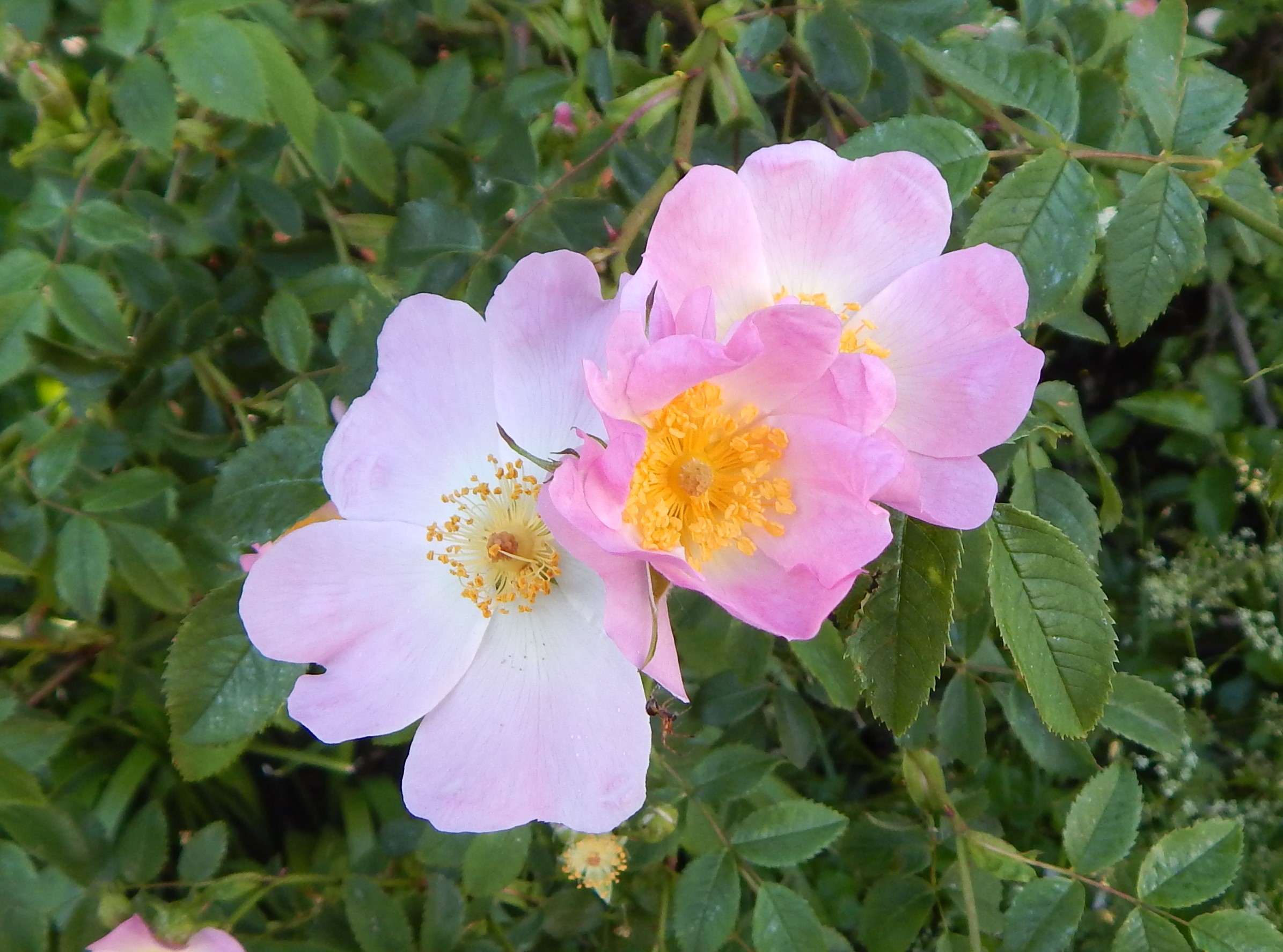
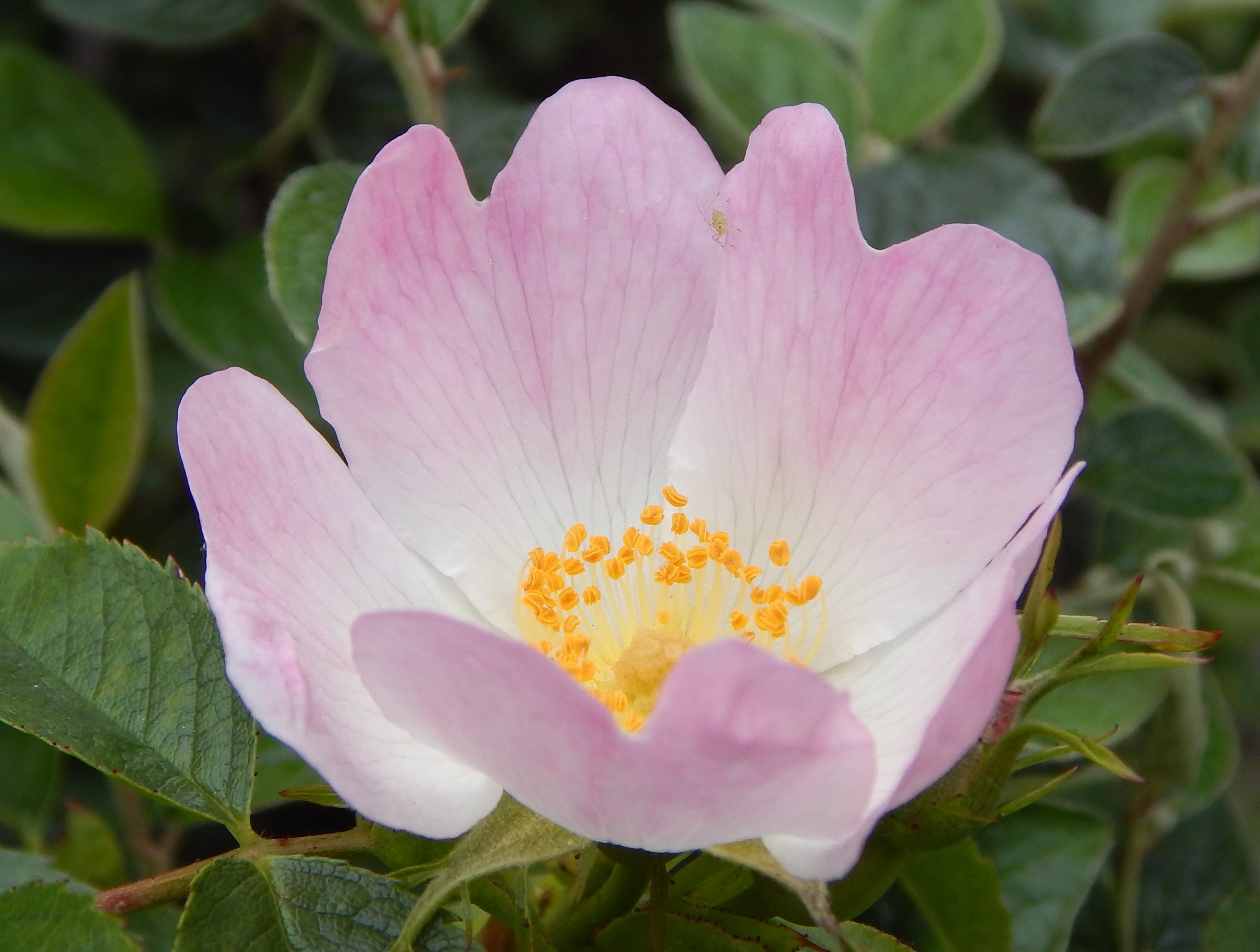

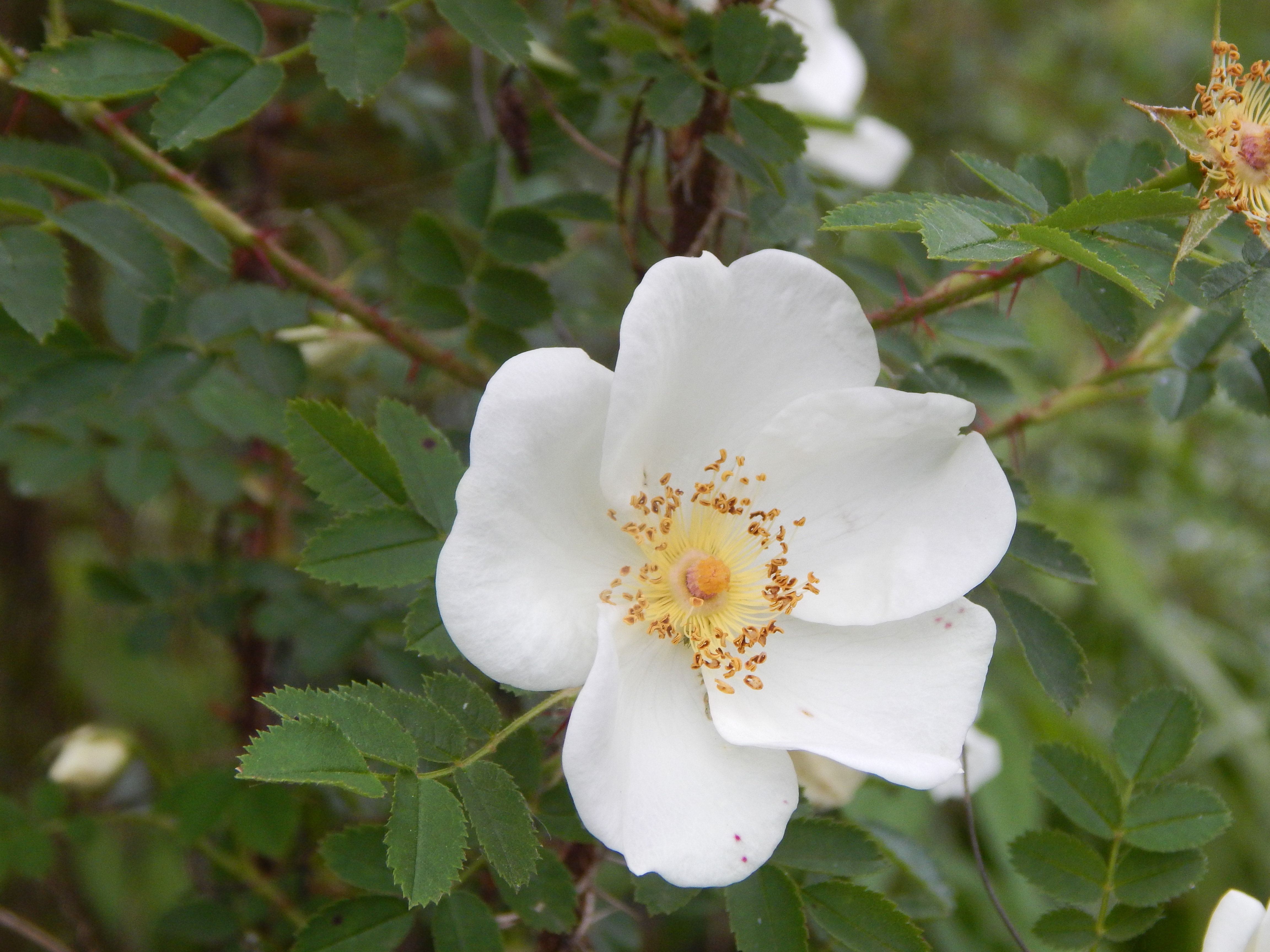
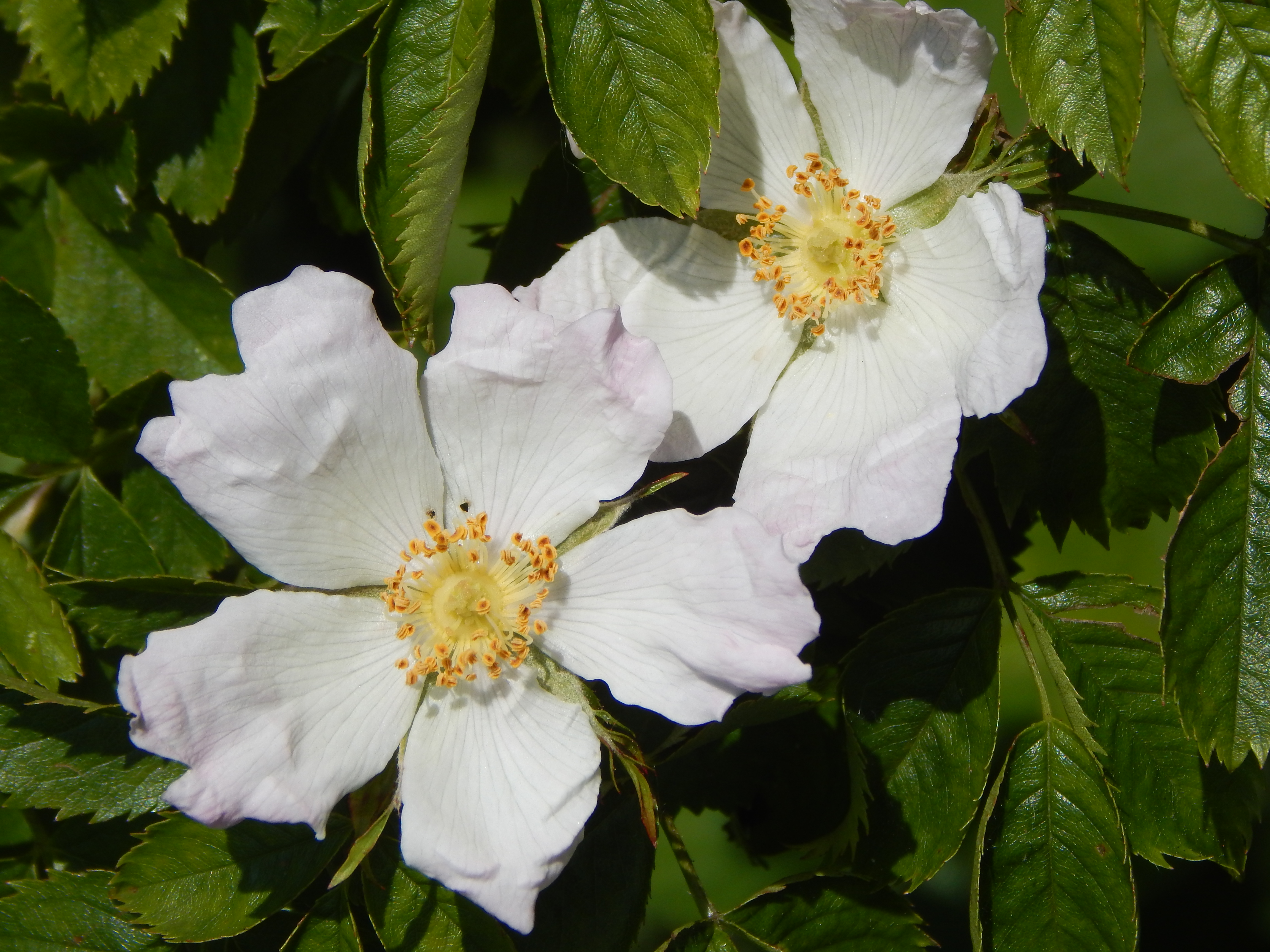
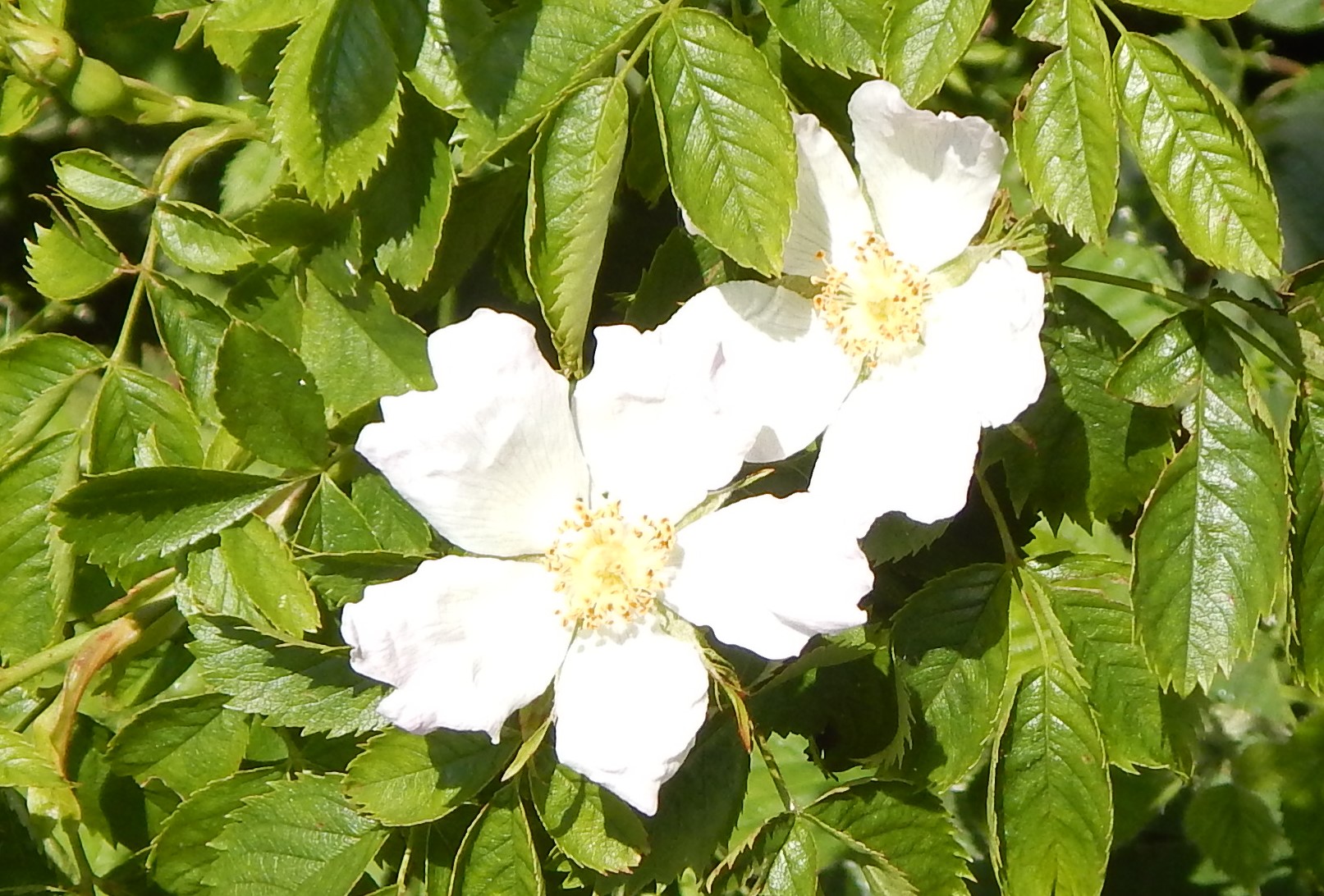
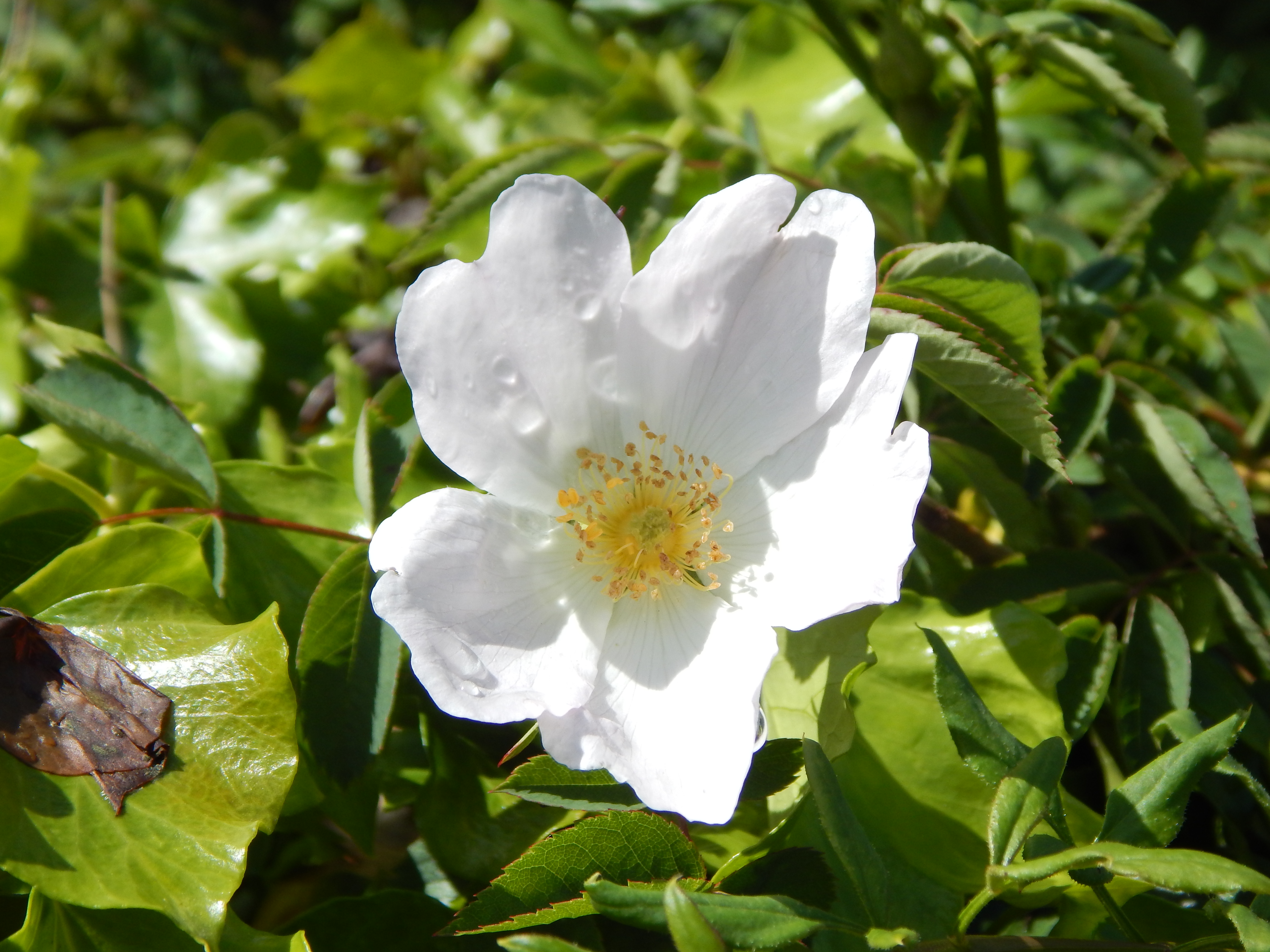
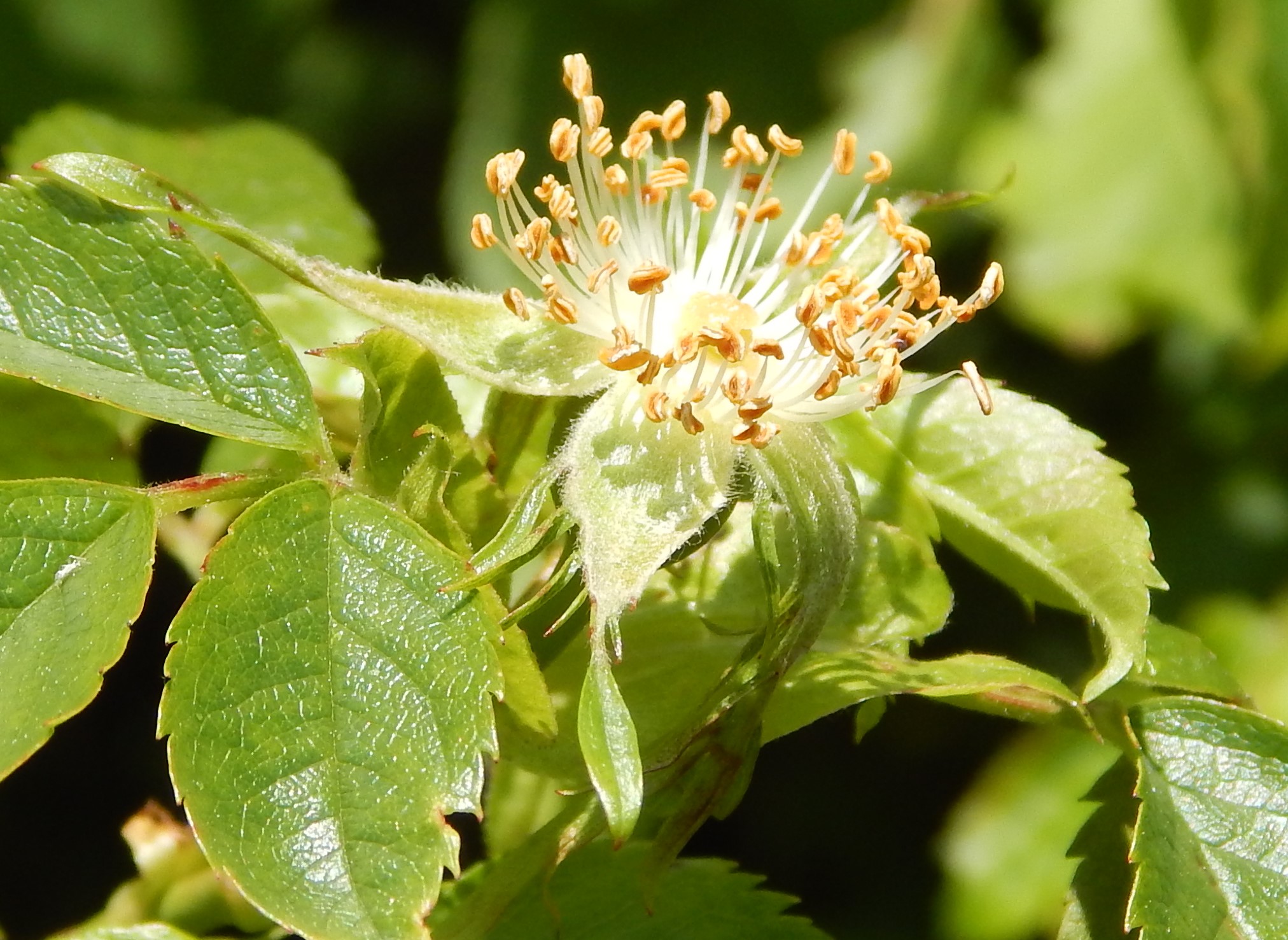
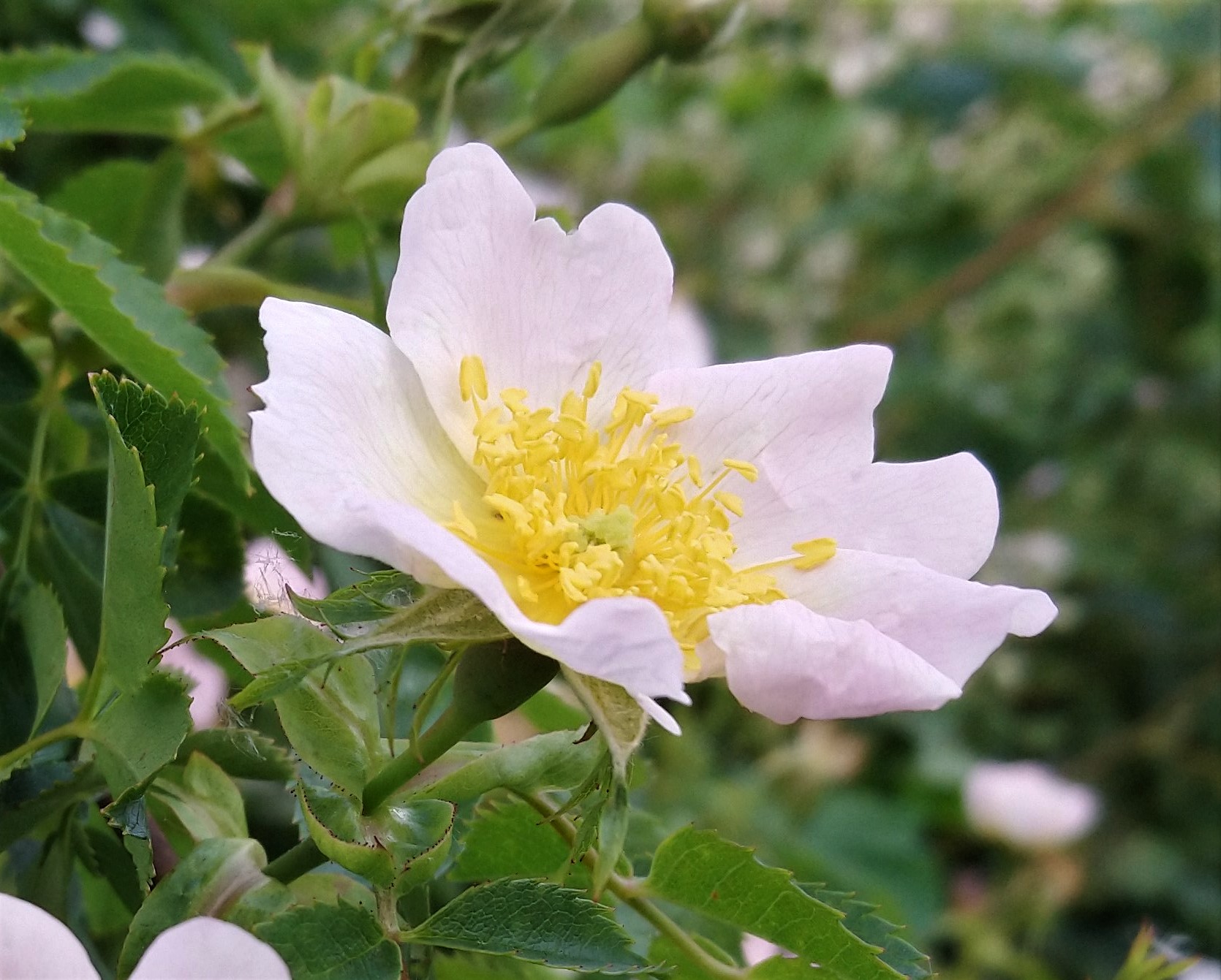


The Dog Rose is rarely used as a cultivated garden rose but all cultivated roses are grafted on to rootstock which is generally a variety of Rosa canina.
The genetics of Rosa species in the Canina section is unusual. Only seven of its chromosomes are paired. The others pass down singly via the female egg cells but not in the pollen.
Rosa Rugosa
I have included this species because its appearance is much closer to the Wild Rose than to the more ornate varieties that have been developed from other Rosa species (coming tomorrow.) Actually, most species have very simple flowers but we never see them in their native, uncultivated forms.
In the wild Rosa rugosa forms dense thickets by developing new plants from its roots. The prickly stems have densely packed prickles (unlike the curved ones for the Rosa canina) and leaves are similar to Rosa canina but with a fine corrugated surface that gives it the name rugose.

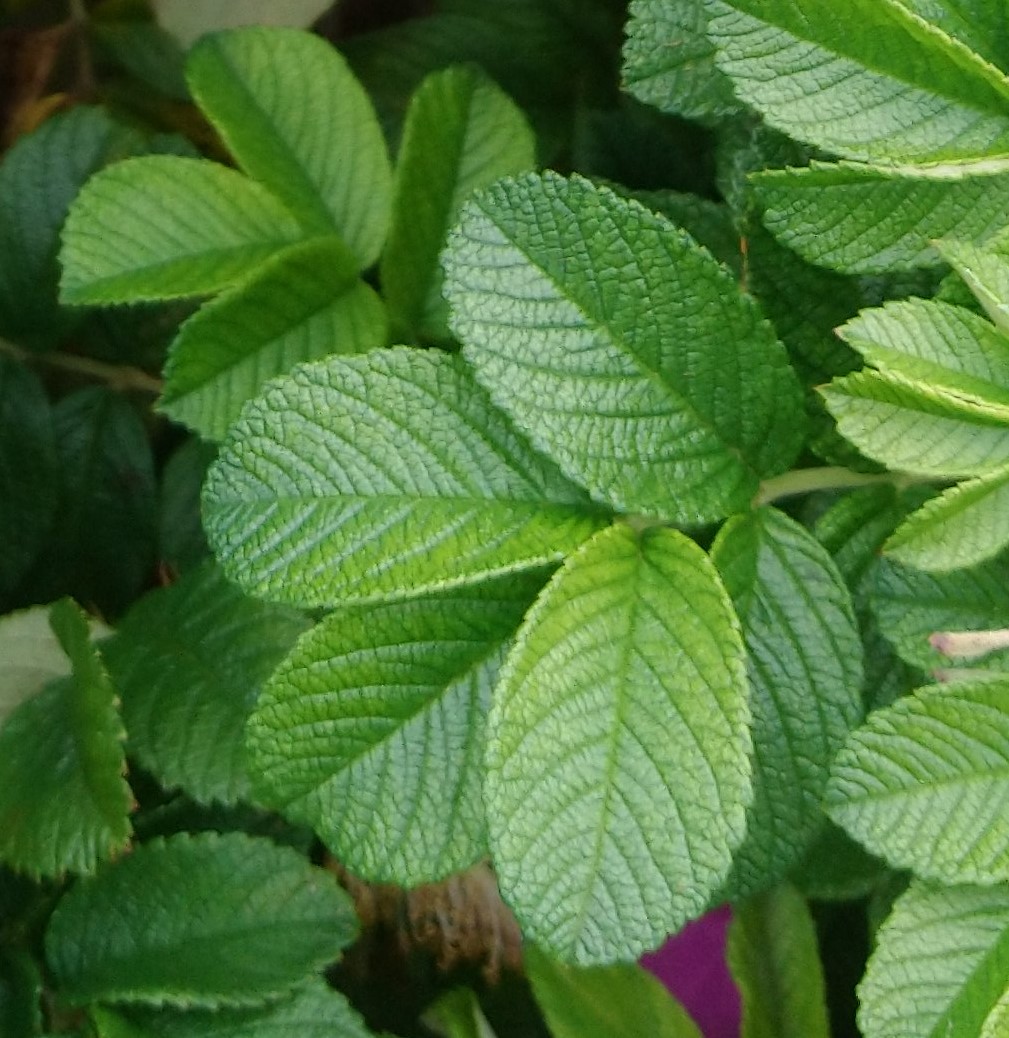

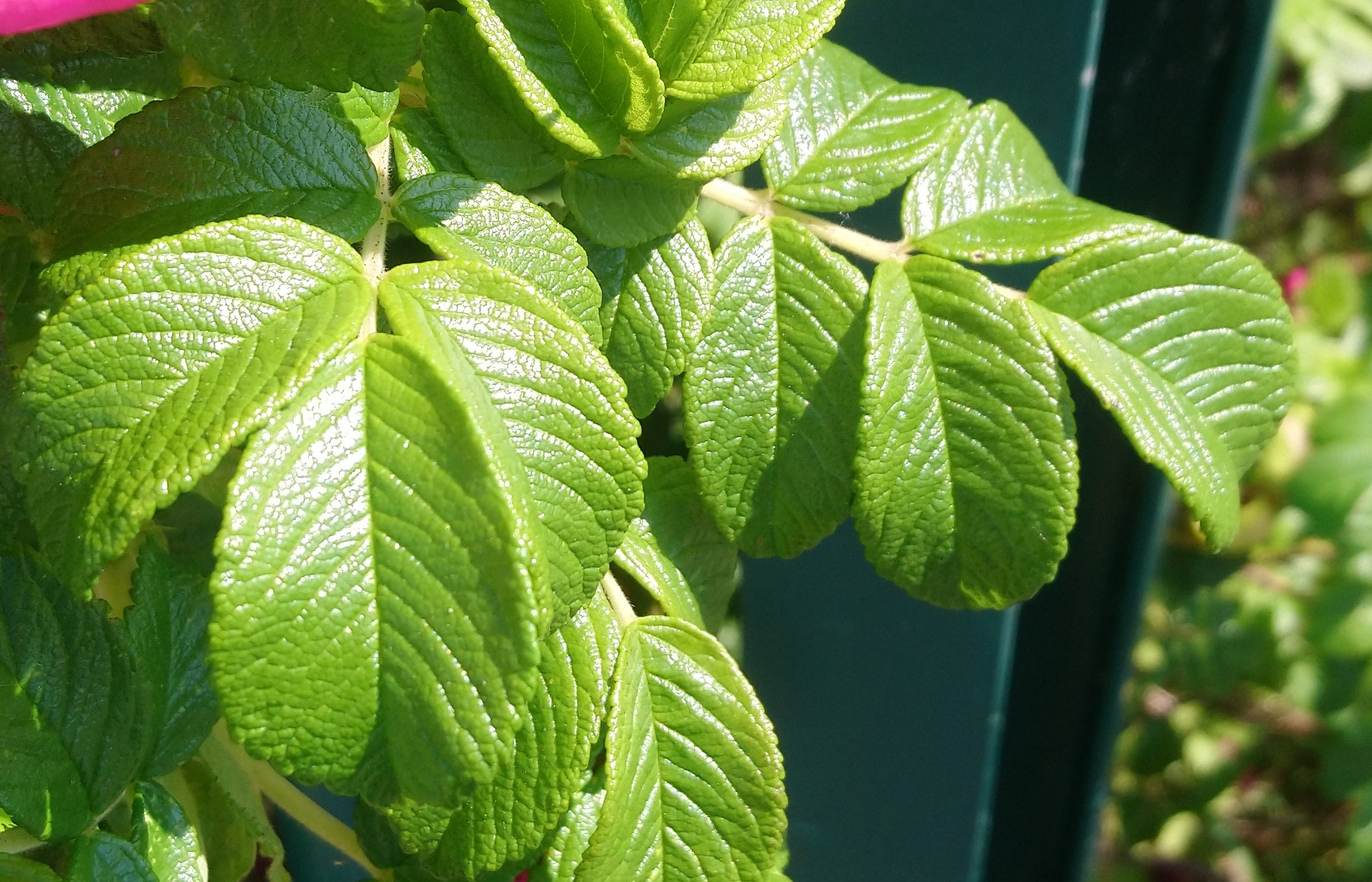
Flowers are open and flat like the Wild Rose but larger, generally dark red and with many stamens. The fruit is a similar rose hip but larger, sometimes looking like a cherry tomato. It starts green and turns a bright red.
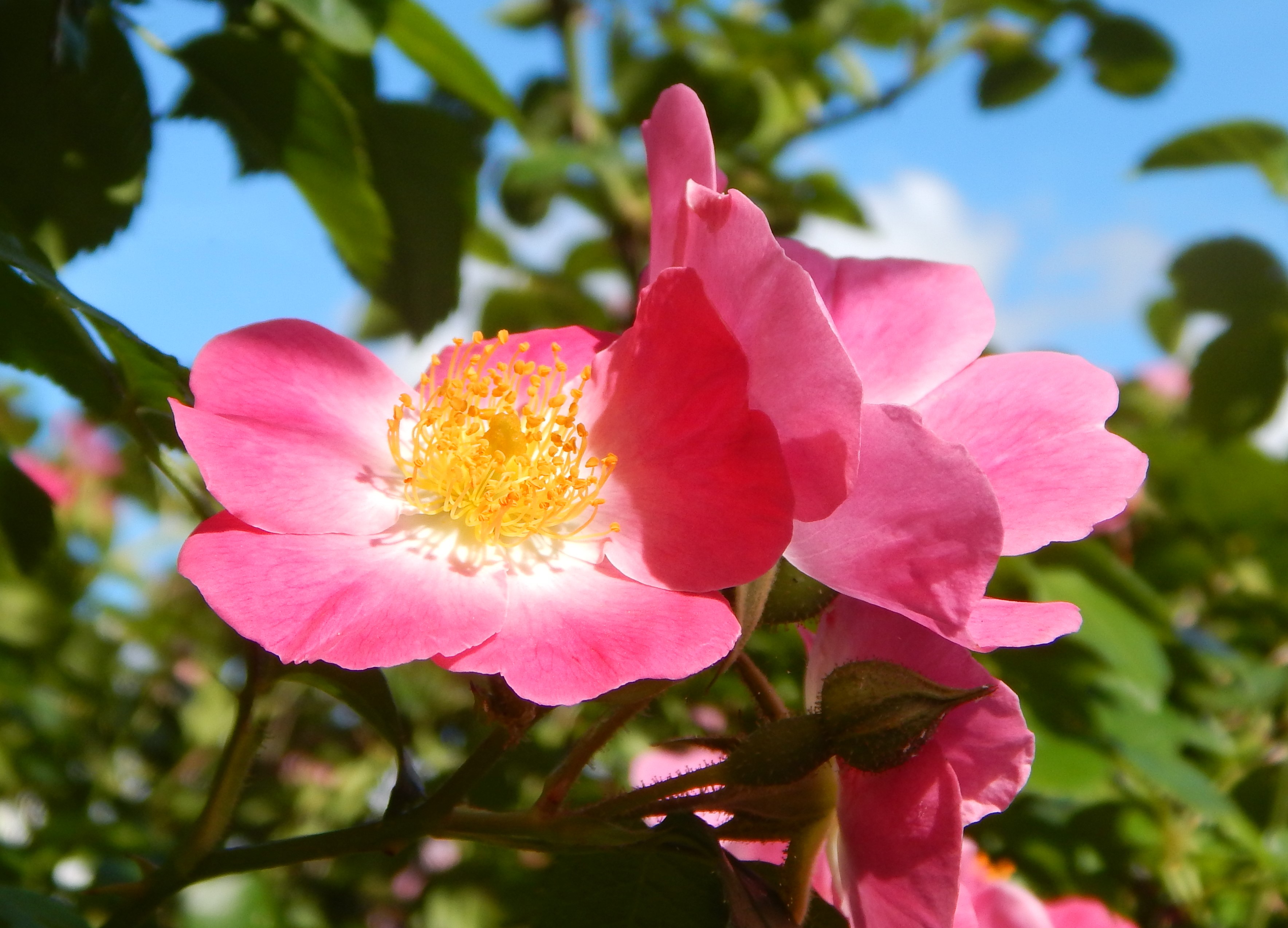


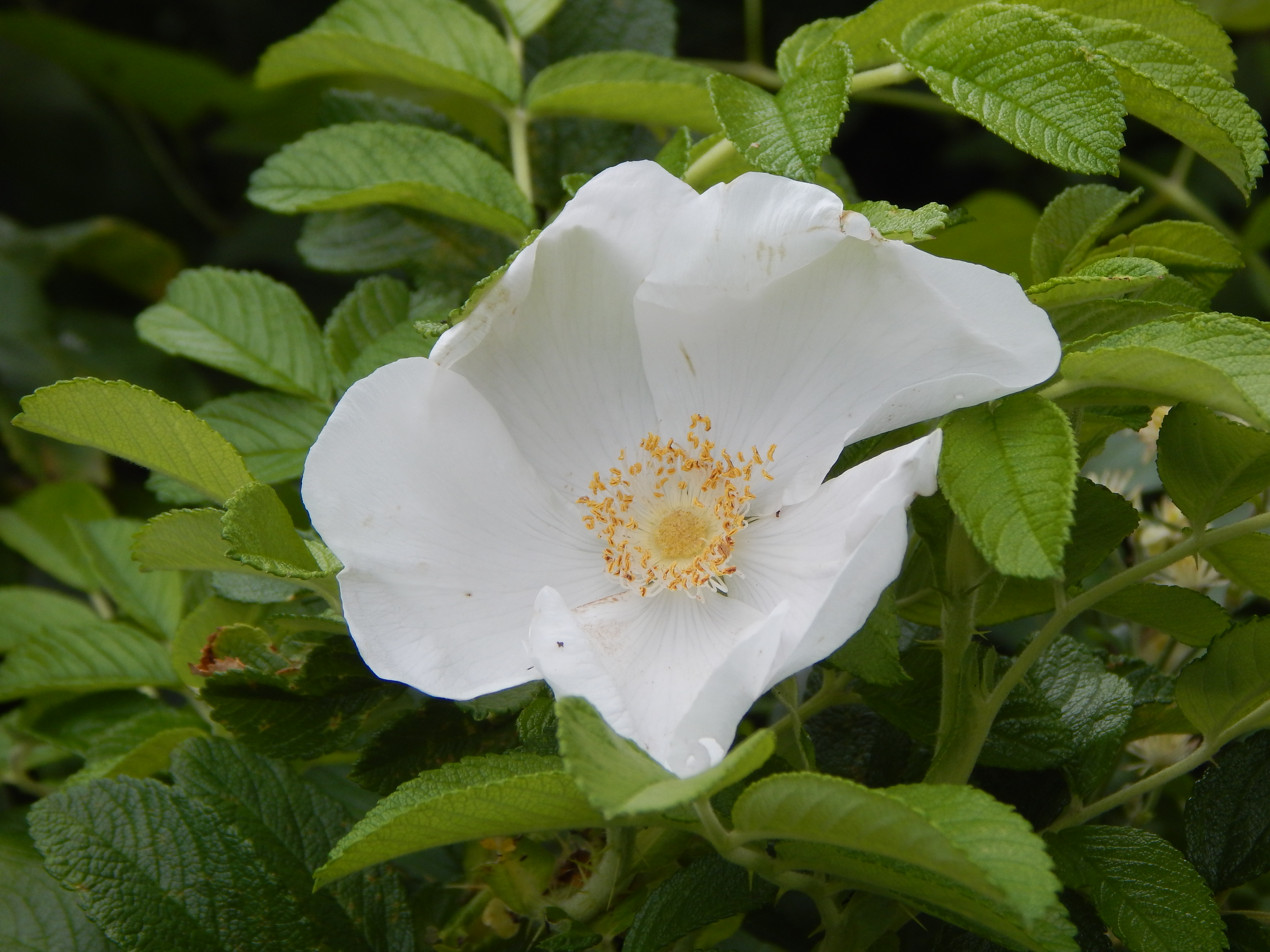
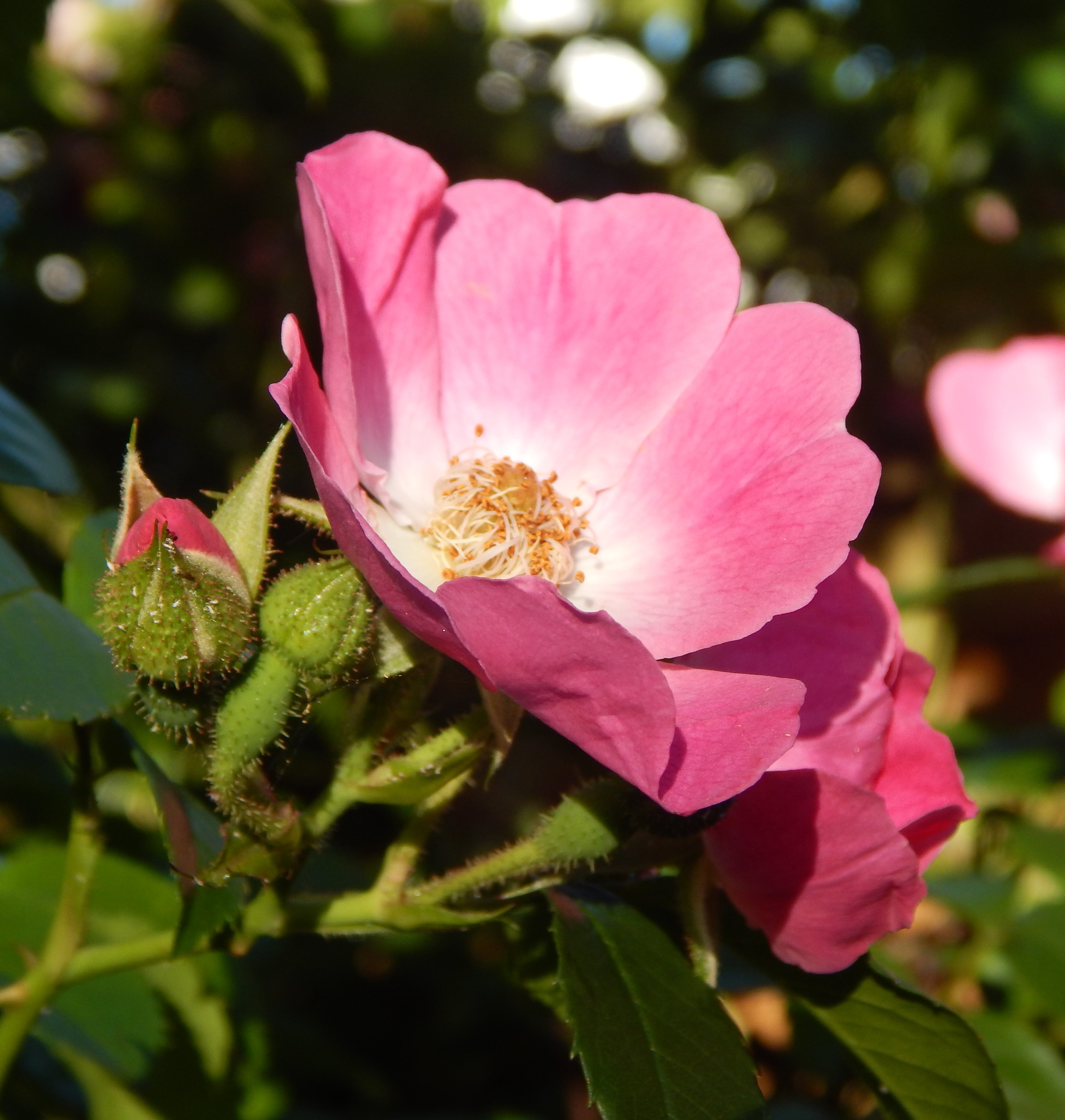

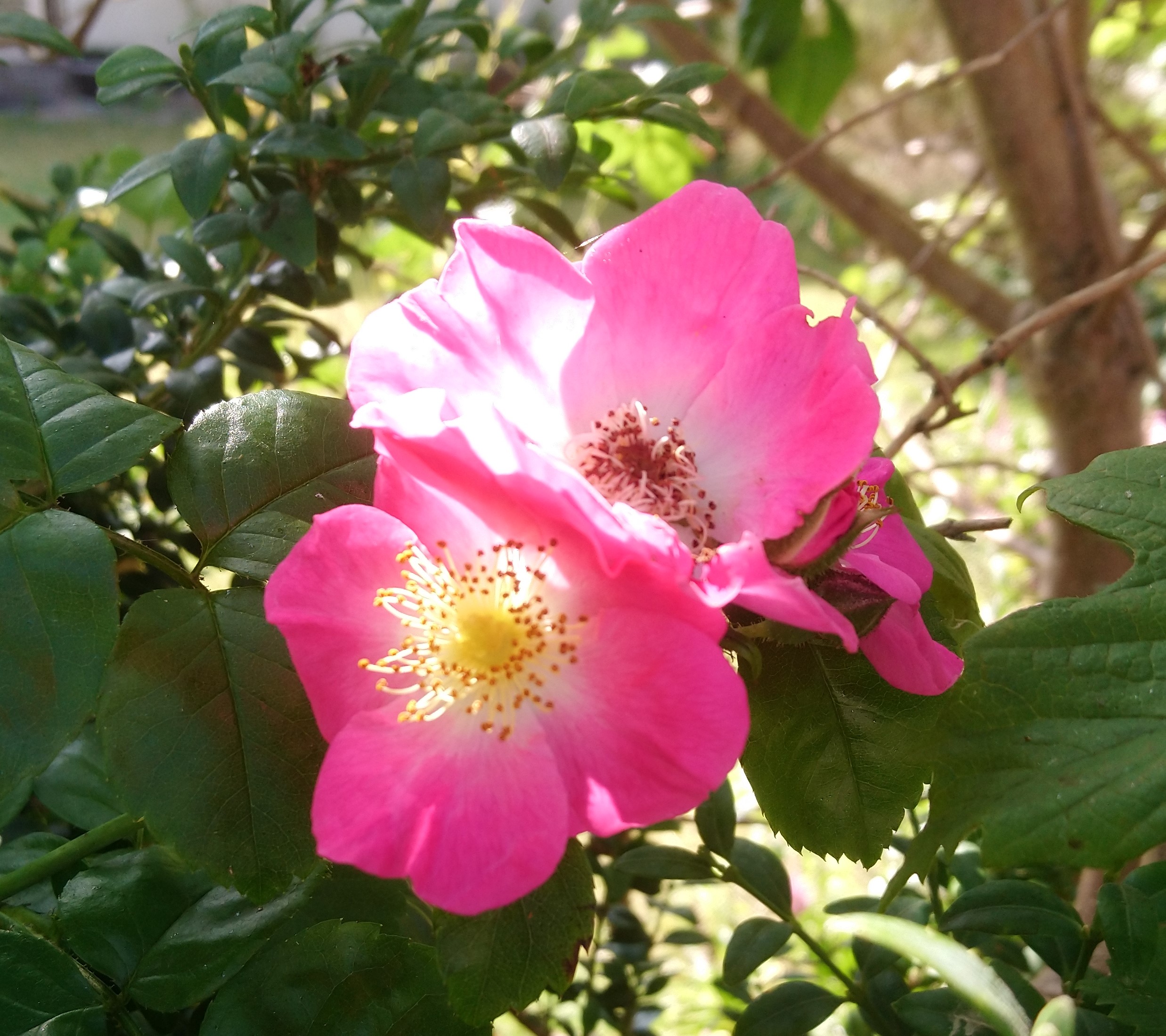




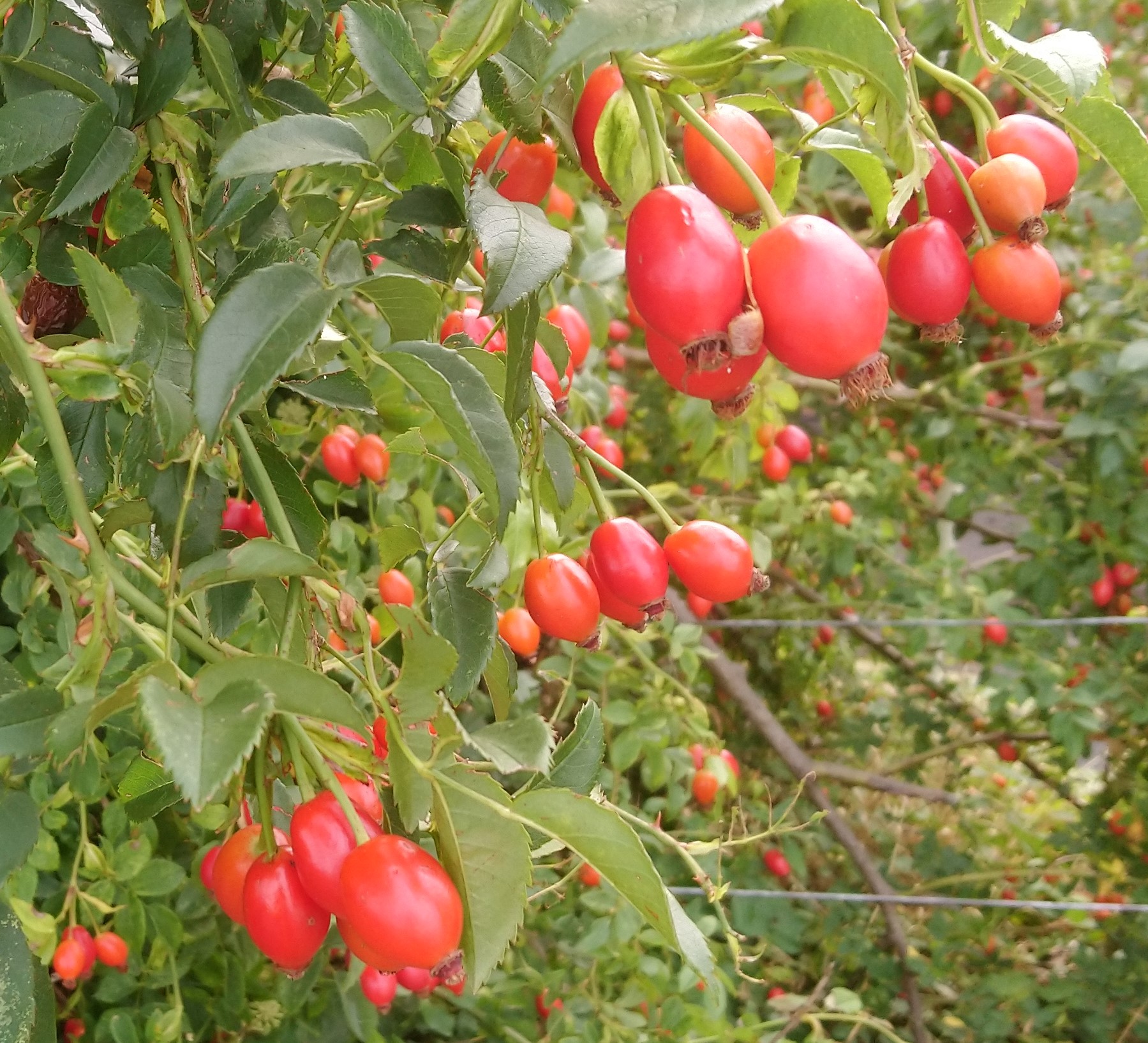
It is a widely cultivated species and most cultivated varieties retain the simple form of a wild rose. They are suitable for planting in long expanses to fill rose beds, sometimes acting as an effective hedge.
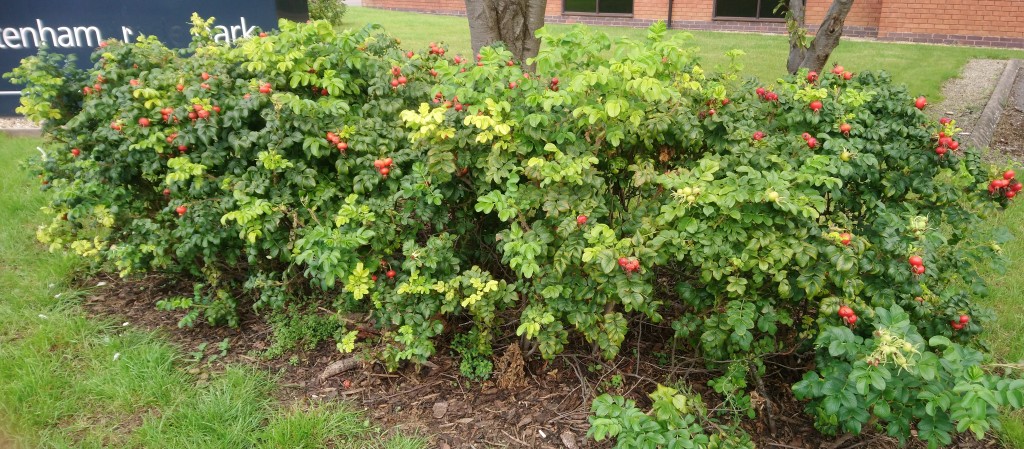
Habitat and use
Rosa canina is native to all of Europe and neighbouring Asia and Africa. Rosa rugosa is native to Japan, Korea and eastern China,
Rose hips, which are high in Vitamin C, are edible raw and can be made into herbal teas, jams, jellies or other culinary products. Rosa canina and Rosa Rugosa are both used in rose hip production.
Other Notes
The rose widely used in heraldry is a simple dog rose, predating the modern garden roses that we will see tomorrow.
What we now call the War of the Roses, was an invention of Henry VII when it ended and the name was rarely used until the Nineteenth Century. The so-called red Rose of Lancaster had barely existed in 1485 and was more usually a gold rose. Henry had fought under the banner of the Welsh Dragon and Henry VI had used the badge of an antelope. Richard III used a boar for his banner. The idea of the War of the Roses enabled Henry to create the Tudor Rose as his emblem, combining the red and white roses as a symbol of unity.
The Red Rose and White Rose are now used to represent the counties of Lancashire and Yorkshire – although the Hose of Lancaster and House of York had no real geographic connections to their respective counties.
The heraldic rose resembled either Rosa canina or a wild European species much like Rosa canina.
See also
More about roses in general will come tomorrow.
